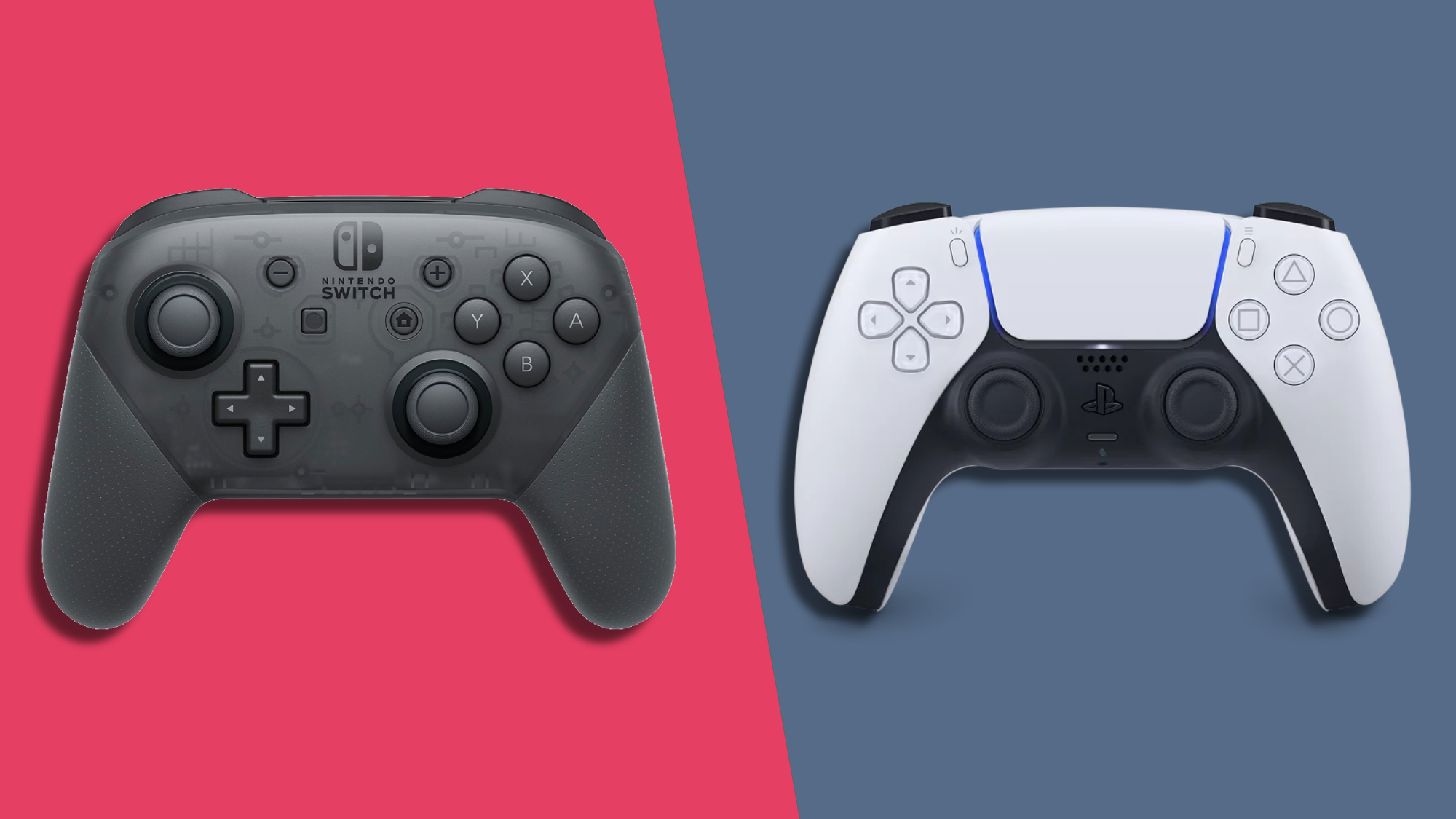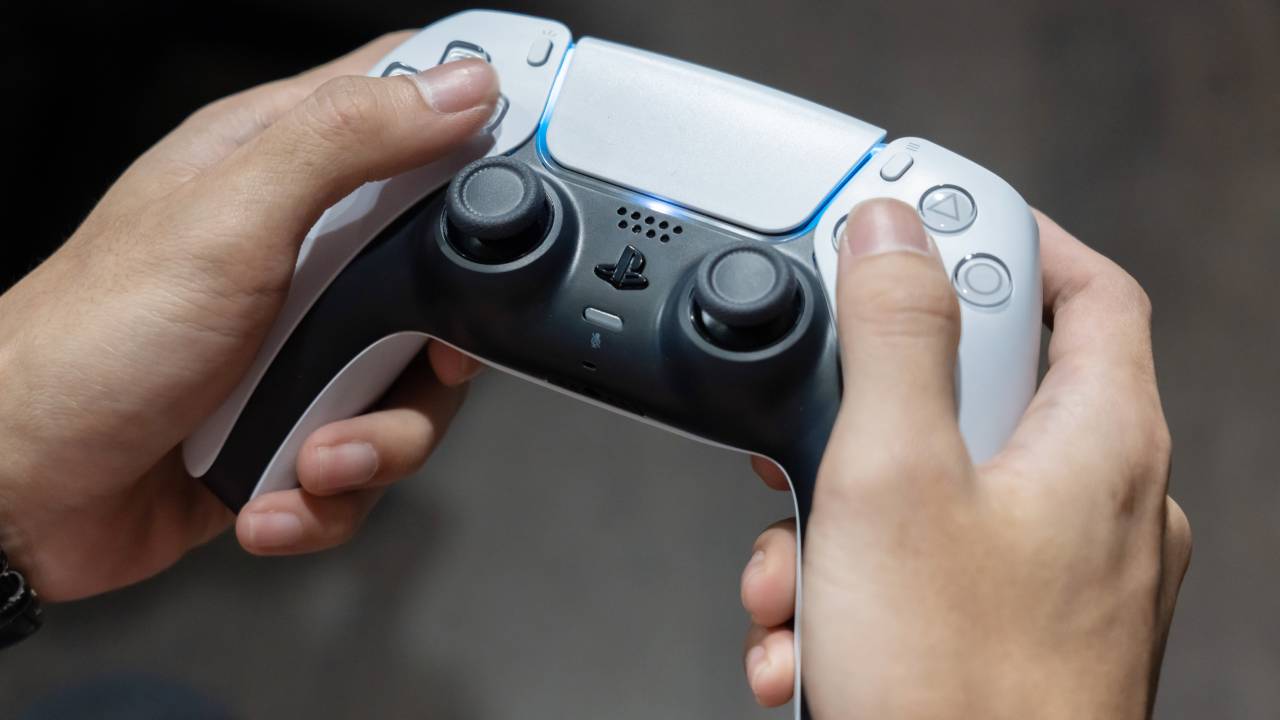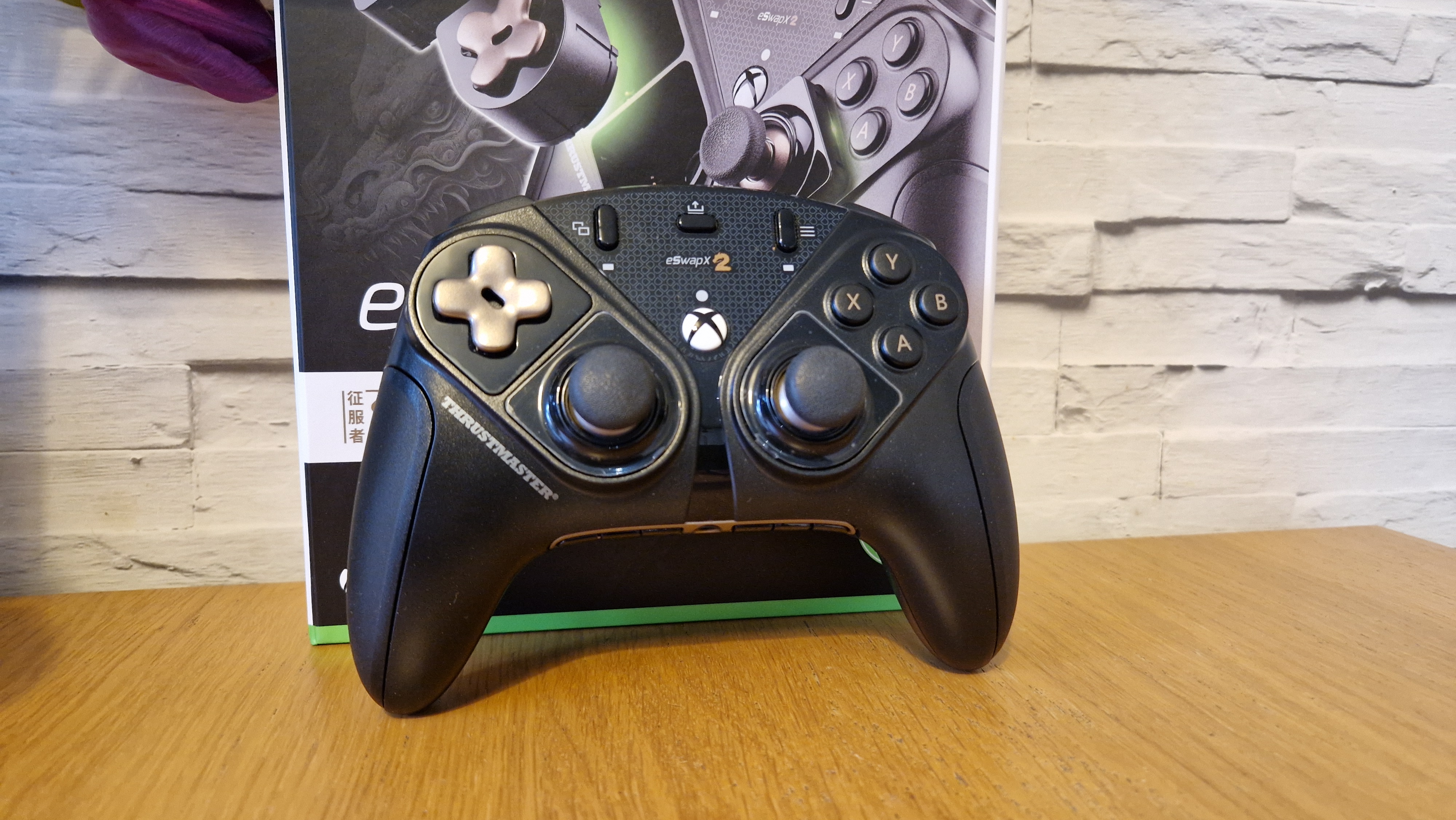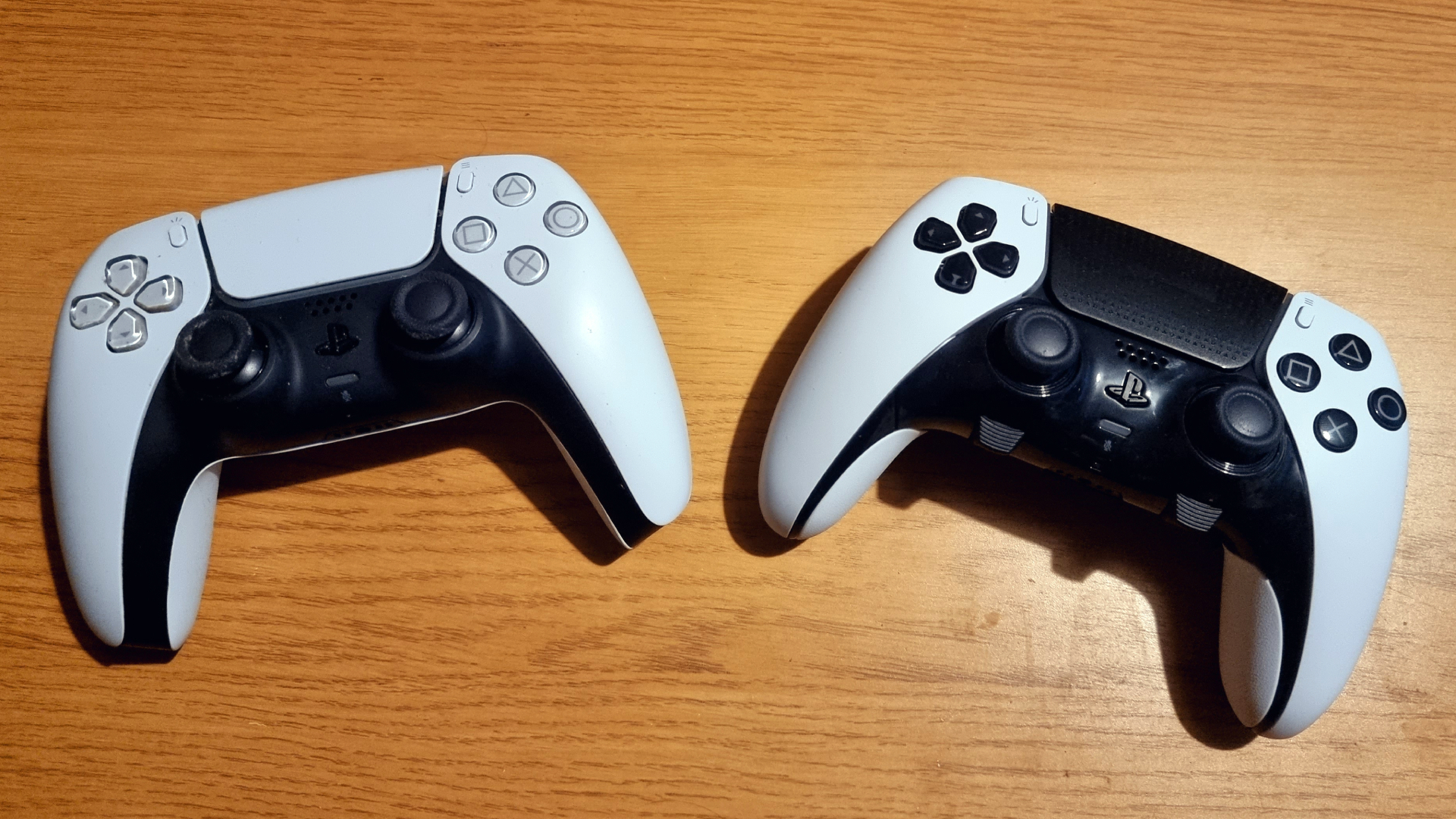
It’s a debate that has rumbled on since consoles gained two analog sticks, but it’s still a hot topic even today — are asymmetrical controllers or symmetrical ones the best?
The latter is how you’ll find many of the most popular controllers, especially as that’s how Sony uses them on its DualSense controller for PS5, but many will no doubt point to the offset sticks of an Xbox Wireless Controller or Nintendo Switch Pro Controller as the ‘correct’ way simply by virtue of both companies adopting them.
In all honesty, much of it will be down to personal preference, but that’s not to say there aren’t subtle benefits, and weaknesses, to each. Although in our minds, any controller that gets the job done is the one you should be using. Let’s dive into it.
Symmetrical vs asymmetrical controller: performance and use cases

There’s a good chance your go-to console (or history of platforms) will inform your choice here. If you’re playing on PS5 and have played on the last few Sony consoles, you’ll likely be sticking with symmetrical controllers that have both sticks towards the bottom of the pad.
Xbox fans, particularly those who have been playing since the Xbox 360 days, will likely take the opposite approach, valuing the offset sticks to help form that divide between movement and aiming or camera control. And hey, if there weren’t arguments for both layouts, we’d be in a world where we have a single usable layout, and that’s no fun for anyone.
Nintendo, despite pioneering the analog stick back in the N64 days (can’t be symmetrical if you only have one!), has seemingly fallen on Xbox’s side after symmetrical sticks for the Wii U. Not only are the Joy-Con sticks offset from one another, but the Switch Lite’s built-in controls and the Pro Controller’s thumbsticks follow the same template.
Offset sticks are reportedly more comfortable because the left stick is right where your thumb would sit if you were holding a standard pad with both hands (try thinking back to the classic PS1 controller that didn’t have sticks).
On the right side, the face buttons have long been more important than the second analog stick in earlier console generations, but we’ve sort of adapted over time to use our thumb to jump between the right stick and face buttons.

Some argue that having two sticks in a symmetrical position is ‘unnatural’ for the common hand, but in preparation for this article, I asked half a dozen people, who don’t play games, whether they’d prefer the sticks to be in the same spot or not.
It seems for users who don’t play games, it just makes sense to have them parallel — meaning Sony might be onto something when it comes to getting gaming newcomers involved in their ecosystem. Five out of six people in my super scientific survey said they’d prefer to learn to play on a Dualsense just because it made more sense for the sticks to be in the same spot on each side of the controller.
It’s also worth pointing out that there’s no ‘one size fits all’ design for all, meaning depending on accessibility concerns, you may still gravitate towards a symmetrical third-party option on Xbox, or asymmetrical on PS5. Or, one of the increasing number of modular controllers might be a means to make the best fit for you so you have the choice and flexibility.
In my research to cover this topic, I couldn’t find any evidence anywhere of anyone having a particular need for either stick setup in any genre of gaming, but many esports professionals who don’t play on PC do tend to use offset stick pads.
Before you consider hopping over to Team Offset, it’s worth pointing out that the Xbox’s lineage as a shooter-first console likely played a sizable part in this, meaning pros stick to what they feel most comfortable with.
Symmetrical vs asymmetrical controller: price and value

There’s an element of nature versus nurture, then, and you’ll likely return to whatever format you feel works best for you.
Thankfully, it’s getting easier to mix things up. For one, there are controllers that will literally swap out your entire thumbstick so you can switch its location around, like the Thrustmaster eSwap X2 controller and the Victrix Pro BFG.
This means you can have the best of both worlds, which is particularly welcome if you play on PC, can’t decide generally, or have developed particular preferences for particular game types.
Some argue that offset pads tend to have worse d-pads because the directional buttons tend to be put into a smaller space, but I feel like that’s definitely improved in recent years, at least with first-party options. Sony’s has always been pretty consistent, but Xbox 360 controllers had a d-pad that felt like pushing gum down the sink, which may have put folks off.
It’s also worth noting that Xbox and PlayStation both now offer ‘Pro’ adjacent controllers with the Xbox Elite Series 2 Wireless Controller and Dualsense Edge. With customizable paddles and swappable sticks, there’s no option to swap stick placement on either, suggesting both are sticking to their guns. Those high-level features come with higher prices, too, meaning there’s an awful lot of difference between buying a standard controller and opting for a ‘Pro’ one.
Symmetrical vs asymmetrical controller: verdict

There really isn’t a winner with stick placement on symmetrical or asymmetrical pads. If you’re new to gaming, you’ll either find yourself expecting symmetrical sticks (probably) or naturally adjusting your hand to whatever is on offer. The introduction of modular controllers does open up the choice a bit more now, but they will set you back and are generally aimed at those looking for more premium and customizable pads.







